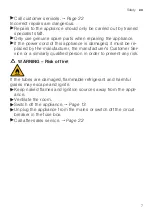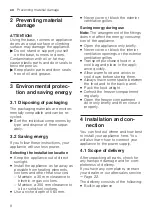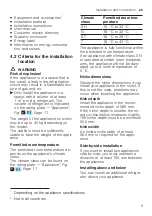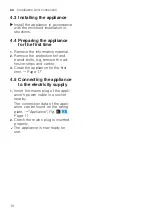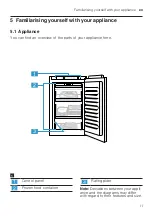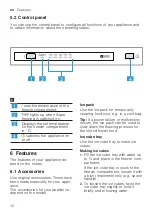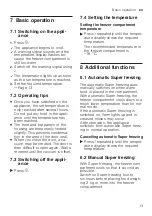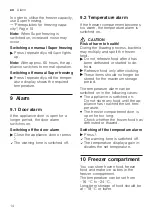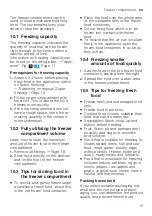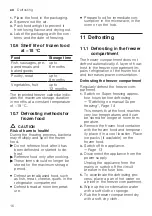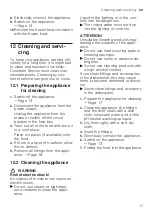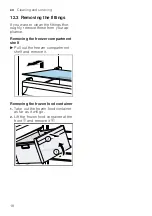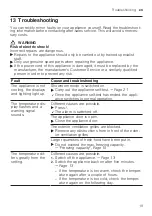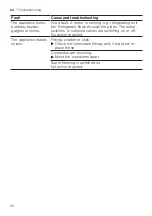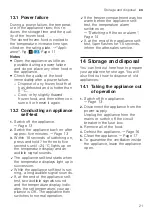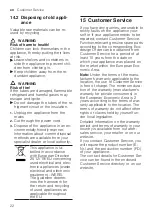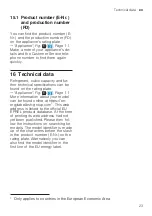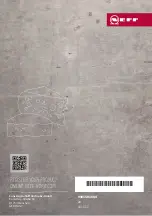
Storage and disposal
en
21
13.1 Power failure
During a power failure, the temperat-
ure in the appliance rises; this re-
duces the storage time and the qual-
ity of the frozen food.
The stored frozen food is cooled to
the temperature increase time spe-
cified on the rating plate.
3
,
Notes
¡
Open the appliance as little as
possible during a power failure
and do not place any other food in
the appliance.
¡
Check the quality of the food
immediately after a power failure.
–
Dispose of any frozen food that
has defrosted and is hotter than
5 °C.
–
Cook or fry slightly thawed
frozen food, and then either con-
sume it or freeze it again.
13.2 Conducting an appliance
self-test
1.
2.
Switch the appliance back on after
approx. five minutes. →
3.
Within 10 seconds of switching on,
press and hold for three to five
seconds until –24 °C lights up on
the temperature display and an
audible signal sounds.
a
The appliance self-test starts when
the temperature displays light up in
succession.
a
While the appliance self-test is run-
ning, a long audible signal sounds.
a
If, at the end of the appliance self-
test, two audible signals sound
and the temperature display indic-
ates the set temperature, your ap-
pliance is OK. The appliance then
switches to normal operation.
a
If the freezer compartment was too
warm before the appliance self-
test, the temperature alarm
switches on.
→
"Switching off the door alarm",
a
If, at the end of the appliance self-
test,
flashes for 10 seconds,
inform the after-sales service.
Storage and disposal
14 Storage and disposal
Storage and disposal
You can find out here how to prepare
your appliance for storage. You will
also find out how to dispose of old
appliances.
14.1 Taking the appliance out
of operation
1.
2.
Disconnect the appliance from the
power supply.
Unplug the appliance from the
mains or switch off the circuit
breaker in the fuse box.
3.
Remove all of the food.
4.
5.
6.
To guarantee the ventilation inside
the appliance, leave the appliance
open.

